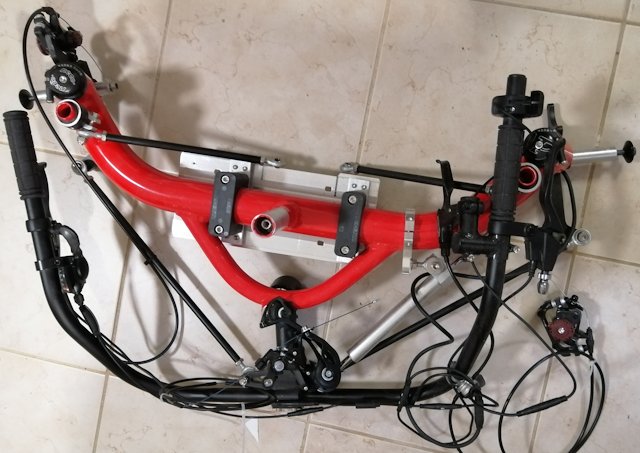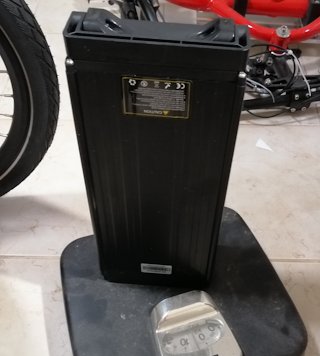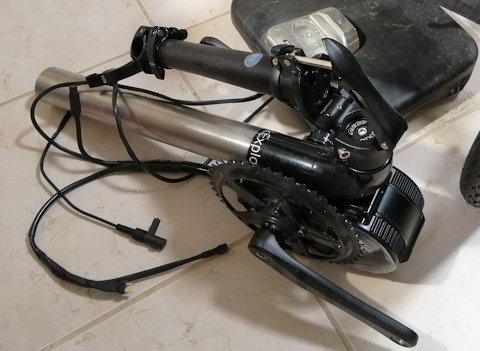Weight of an electric recumbent tadpole trike
In a post yesterday, I showed a photo of my Mark-2 front suspension mounted on the trike frame:
https://bkhome.org/news/202405/recumbent-trike-front-suspension-mark-2-assembled.html
I picked up the front of the trike, and using a block of wood, put it into my bathroom scale. Weight is 13kg. Obviously that is not the weight of the entire trike. So what does an "entire trike" actually weigh?
Here are some very basic trikes, without any front or rear suspension, non-electric:
https://mrrecumbenttrikes.com/newtrikes/
...weight is around 18 - 20kg.
A motor and battery adds about 10kg, bringing the weight up to nearly 30kg. Add rear and front suspension, adds even more, quite easily hitting 35kg. Here is an example, electric tadpole trike with 500W motor, 20Ah 48V battery, rear suspension, no front suspension, 20" fat tyres, the same company that makes my "320" trike, weight 38kg:
https://www.alibaba.com/product-detail/500watt-Motor-20ah-Lithium-Battery-Electric_62583559842.html
Could you lift a 38kg trike? I could, if I want to put my back out.
These weights put things in perspective; I don't need to obsess over making the front suspension very light. A couple of extra kilos doesn't matter. Here is the original front assembly for my trike:

...weight is 6.5kg. That is the cross-beam to which the wheels will attach, and the steering.
Notice that aluminium plate bolted to the cross-beam. That is the mounting to hold the battery. Interesting, they decided to put the battery right up the front. If I do that, with my front suspension, that would be good in one respect; dampening bumps. On the otherhand, I have fairly soft suspension up front, so will need to experiment how to distribute the weight.
While that original front assembly was on the floor, took the
opportunity to measure total width, that is, right to the ends of
the wheel spindles. 915mm! Oh man, that is wide. The
police in WA might turn a blind eye to bikes, trikes and mobility
vehicles being a bit too wide, but if I was to ride that on a
footpath, even a dual-purpose footpath, if the police person was
in a bad mood, they might be inclined to book me. Another reason
to do a custom front suspension.
The original battery, also weighed that, 5.5kg:

Note, I'm not going to use that battery in the trike. Main reason, it is "NMC" technology, as are in most bikes, trikes and scooters. NMC means Nickel Manganeses Cobalt, also known as "lithium ternary" batteries. Apart from the ethical issues how those minerals are mined, NMC batteries have shorter life and are more prone to catching fire than "LFP" technology batteries.
LFP means Lithium Iron (ferrous) Phosphate. These do not have any nickel, manganese or cobalt. They are also slightly cheaper than NMC. The downside is that they have lower energy density, which would be the main reason they aren't used in bikes and trikes.
LFP are also named LiFePo4, which is the standard for caravans, motorhomes and other RVs. They are not so bothered about energy density.
I purchased a 10Ah 48V LFP battery from China (with matching mains charger), and will be using that. As I am planning to be solar-powered, I reasoned that smaller capacity is OK. And it will save about 3kg.
So what else is really heavy? The motor. Here is the motor assembly, without pedals, weight 6kg:

So, the original battery and motor weigh 5.5 + 6 equals 11.5kg.
Wow.
Tags: light
